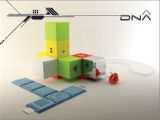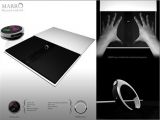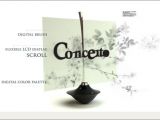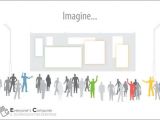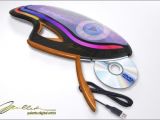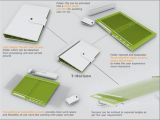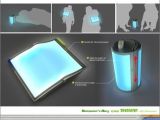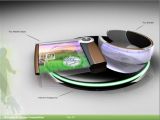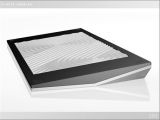The next-generation of Windows computers represents a consistent shift from the now traditional model of PCs. While, with the continual evolution of technology, the next generation of Windows machines are bound to deliver under the hood improvements from extra CPU and GPU horse power, to more efficient storage, all tucked away in an ever decreasing space with a focus on mobility, the future will also take the surface of computers to new interpretations of shape, style, look and feel and interaction. At the end of October 2007, Microsoft debuted an initiative set up to offer a preview of the next-gen PC designs. Announced on October 29, last year, the 2007-2008 Next-Gen PC Design Showcase was opened to all entries until December 14. Now the competition is well into the judging phase, and end users have a chance to have their say.
The official Next-Gen PC Design Competition website now features no less than 31 PC concepts. All the entries have made it into the final stage of the showcase by managing to make good on a set of criteria imposed by Microsoft. It must be stressed from the get go that the next-gen PCs featured on the website are not even at the stage of a prototype. They are merely conceptual designs illustrating innovation, a new level of user experience and interaction, aesthetics, technology integration, viability from a marketing and manufacturability point of view and ecological focus. At the same time, the deal breaker requirement from the Redmond company was that the next-gen computers be built around the Windows platform.
In this regard, while there is of course no guarantee that any of these concepts will in fact make its way onto the store shelves, if this were the case they would be automatically connected with the next generation of the Windows operating system: Windows 7. The successor of Windows Vista was officially confirmed by Microsoft for 2010, three years after the general availability of the latest Windows client. I have selected the top 10 next-generation computers out of all the concepts from Microsoft that have at least a remotely palpable potential of running Windows 7. But feel free to peruse all the finalist items available on the Next-Gen PC Design Competition website.
The Redmond company is prepared to offer a total of 5 prizes and just as many honorable mentions. A panel of Industrial Designers Society of America (IDSA)-member judges will continue to review the concepts until April. The 1st winner stands to receive $10,000, with $5,000 for 2nd place, and $2,500 for the 3rd. Microsoft Chairman Bill Gates will also deliver a $10,000 award, while visitors on the website can determine the winner of the Public's Choice Award - $2,500. Today, March 15, 2008, is the last day when you can vote your favorite next-generation PC.
Momenta - featured in the image at the top of this article, Momenta is "the neck worn PC also captures the best and most exciting moments of your life. Using the new light-weight Microsoft operating system, SLIM, this PC travels with you effortlessly. The projected touch-gesture interface allows you to interact with your software wherever you are without requiring interface peripherals but its wide-coverage 700 MHz WiFi wireless allows both connection to the web and to performance enhancing peripherals," as an excerpt of the Momenta's description reads.
DNA - This design is meant to offer end users a fully customizable machine. The concept permits users to build their own computer in accordance with their personal style and preferences. Microsoft is currently working on a modular architecture of the Windows operating system. Nowhere is this new trend more visible than in the new Windows Server 2008 platform which comes with a variety of roles. DNA applies the same concept to the hardware infrastructure offering a central module the entire computer can be built from via a multitude of connections.
"Besides the core, there are more three modules: the projector, the keyboard and the power supply. All the other modules can be bought separately (always having the possibility of buying the pack with the four main cubes) depending on your needs. Beside these three modules the user can always buy extra ones with additional functions (peripherals, flash memory?).The user can customize the surface of the cubes by drawing, painting, sticking on it because it is easy to clean. We choose the name DNA inspired in human chain identity which is unique and personal, different from user to user," the authors of the project revealed.
MARRO - Is a computer that comes with the promise of marriage. This because the design involves a central unit as well as a mobile satellite unit, which is nothing more than a ring. By enjoying such a close proximity with the user, MARRO will be able to observe, record, and analyze the digital life pattern of the end user. Via the MARRO project, users get a Life operating system on a Life PC. In this manner users will be able to enjoy streamlined access and discovery of digital content with the help of the ever evolving MARRO.
"The design concept of MARRO allows users to analyze, organize, and customize all media information within one system, accessible by only a touch. MARRO will monitor and record all activities and digital media concurrently in real time. Objects and devices 'touched' by the MARRO system involve all facets of daily life: e-food menus, touch screen computers, mobile phones, media players, digital cameras, automobile dashboards, info kiosks, e-pages and video game controllers. Visually understanding your digital lifestyle is important and the "Life Pattern" software can display a daily media map by placing your 'ring finger' on any touch screen," reveals a fragment of the MARRO's description.
Conceito - is a machine that will take digital painting to the next level. The computer features a flexible transparent LCD screen which will act as a canvas. The user/artist will be able to interact with the digital canvas via a pen and effectively paint while having the translucent LCD screen right on top of the target. The project team plans the pen to be context and color sensitive being able to replicate colors it finds in the real world.
"There are large number of potential user: professionals can use Conceito as painting creator and editor, comic artists can use it for quick sketches, graphic artists use it to gather information and fast layouts, students and enthusiasts can utilize it for learning painting and experiment," considers the Conceito authors.
Everyone's Computer (EC) - is essentially at the opposite pole of the technology spectrum from a personal computer. While a PC is essentially connected with a single user, EC will support multiple users simultaneously. At the same time, this cannot be done via traditional interaction models such as the keyboard and the mouse. What EC will do in this context is to permit the utilization of a natural interaction model, through gestures and from a distance.
"EC challenges the conventional method of inputting instruction through keyboard and mouse; and the traditional user interface resulted from this input method. It cannot be better to control the computer with the instinctive movements of our hands. This not only reduces input hardware, but also enables users to control from anywhere. It accommodates more than one user at the same time and transforms personal computer into a multi-personal platform, which enhances social interaction and communication. This is now Everyone's Computer," is the introductory fragment of EC's description.
Pallete - is at the same time a machine aimed at visual artists but also a piece of hardware that comes with a new interaction model. Pallete is designed to act as a new interaction model, rather than a standalone PC. You just have to imagine interacting with a computer via painting behavior, with a brush rater than with a keyboard, mouse or gestures/touch etc. Essentially instead of pointing and clicking, or pressing keys, users will be able to draw their commands to the computer.
"Pallete is developed because of the basic needs of people to sense more of their art activities in the way of conservative ways. Since their child period of life, human were taught to and learn to draw, sense in making lines and visualize what in their mind. Most of us start to learn that with canvas, brush and even palette. Those tools were practically left as the digital art era is developing rapidly. People who are passionate about artistic performance and prefer the conservative ways will use brushes and palette rather than mouse, pad or digital pen," reveals the Pallete documentation.
T-Horizon ( Touch-horizon) - is a concept that promises to do no less than to expand the horizon of digital technology flexibility. T-Horizon goes extremely far from the traditional PC and notebook, taking the best of old computers while permitting new user interaction methods as well as delivering an ergonomic design, adaptable to different contexts. The next-gen PC comes with 3D modeling, supports multi-touch as well as stylus input and can be modeled to fit a variety of usage scenarios, in no way as restrictive as the currently available machines.
"Waiting for a rendering to complete? Watch your favorite video on other screens. Habituated to reading paperback design journals? Flip open the T-Horizon and read like a book, flip pages and live the age-old experience. Difficult to read plan views, navigation maps on a vertical screen? Remove the CPU from the T-Horizon and spread it flat on the desk. Constrained for space, taking notes, trying to maintain privacy of your concept drawings? Lift upper flap of T-Horizon & use the portrait or landscape format," is the promise for T-Horizon.
Backpacker's Diary - today it is impossible to flip through the pages of a computer. Perhaps simply because computers generally fail to be equipped with pages. But the next-gen PCs will change this. The Backpacker's Diary adapts the old format of a book to that of a PC. The authors of the concept have imagined a machine which can be operated in the same manner as reading a book.
"Backpacker group is one of the biggest youth group in the world. They enjoy the pure experience with natural environment. Compared with the complicated and pressing daily live, traveling in an unacquainted circumstance enables themselves a process for deep feeling and thinking. They love all objects which could help improve the quality of the trip and make them more independent during trips," stated the product's description.
FluxPC - is nothing more than a bracelet and a portable display which communicate through a wireless connection, together making up a full PC. The design will permit end users to carry the computer around their wrist while at the same time interacting via touch with the portable display. At the same time, due to the built-in wireless connection, the machine can very easily communicate with similar devices as well as with additional products featuring wireless capabilities.
"This system enhances existing wearable decorative elements by providing an enhanced computing experience. The individual is no longer bound to a device that dictates its use to the individual. Instead the user dictates his or her use to Flux. The very appearance of Flux can change daily as the user up loads and edits content and then sets it to outer appearance of Flux. The system learns subtle and not so subtle differences from the user's interaction and gesture," the authors of the FluxPC concept explained.
ZEN - one of the aspect of next-generation PCs will be a stronger focus on accessibility. Enabling natural user interfaces is only a part of the equation. There is a segment of consumers, suffering from various disabilities, that will never be able to enjoy access to technology simply because of the limitations of their body. ZEN is a computer tailored on the needs of the visually impaired. This is done via a three dimensional user interface utilizing a Tactile User Interface.
"It is comprised of a hardware called the 'Sandbox PC' and ZEN edition operating system which work together to create a computing environment that can be used with eyes closed. The innovation of ZEN is embedded in its name. ZEN is for 'Z-axis Enabled,' meaning it is a truly interactive 3D computer. The Sandbox PC features Active Surface, an electronic surface that can take different physical shape and can be manipulated by the user. You can read Braille text on it, make out windows, icons, and different textures," the ZEN project authors said.

 14 DAY TRIAL //
14 DAY TRIAL // 
